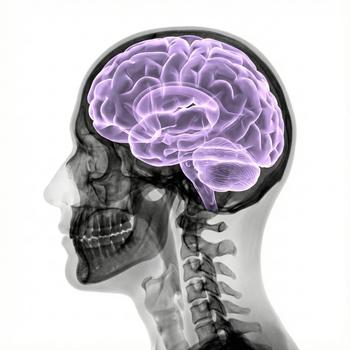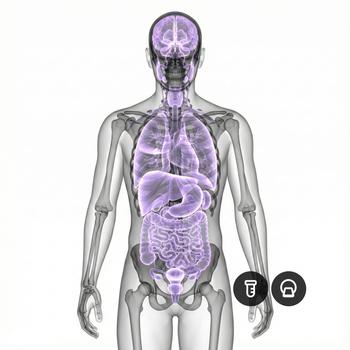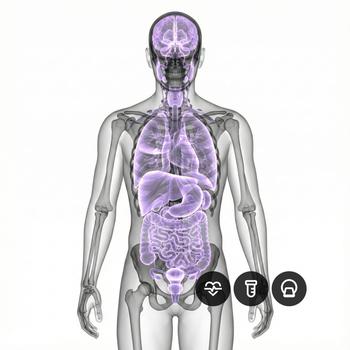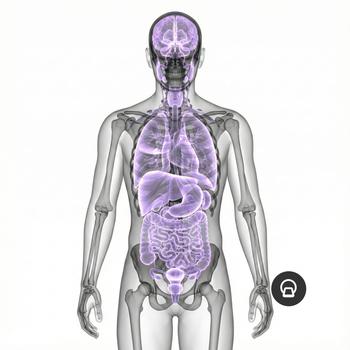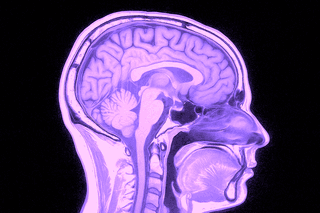Quick version
The brain controls the functions of the entire body and is crucial for everything from movement to emotions.
- Divided into the cerebrum, cerebellum and brainstem
- Involved in thinking, emotions, movement and memory
- Consists of billions of nerve cells and neurotransmitters
- Protected by the skull, meninges and fluid
- Can suffer from serious conditions such as stroke and dementia
What is the brain?
The brain is part of the central nervous system and is protected by the skull. It consists of several different parts that together handle everything from breathing and heartbeat to learning and consciousness. The brain is constantly working, even when we sleep, and is dependent on oxygen and nutrients from the blood to function.
What is the cerebrum?
The largest part of the brain (cerebrum), divided into right and left hemispheres. Conscious thinking, language, problem solving, memory and voluntary movements take place here. The surface, the cerebral cortex, consists of folds and grooves to maximize the surface area.
What is the cerebellum?
The cerebellum is responsible for coordination, balance and fine-tuning of movements. It receives signals from the body's muscles and senses and helps make movements smooth and precise.
Brain stem
Connects the brain to the spinal cord and controls vital functions such as breathing, blood pressure, pulse and level of consciousness. It also contains nerves that control facial and eye movements.
Signal substances and nerve cells
The brain consists of approximately 86 billion nerve cells (neurons) that communicate via electrical signals and chemical substances such as dopamine, serotonin and glutamate. These affect everything from mood to concentration.
Protection and blood supply
The brain is protected by the skull, meninges and cerebrospinal fluid. The blood-brain barrier filters substances from the blood to protect the brain tissue. A constant blood flow is crucial for brain function.
Common Diseases and Conditions
The brain can be affected by many different diseases and conditions, both acute and chronic. Stroke is a common and acute disruption of blood flow to the brain that can lead to paralysis or speech problems. Neurodegenerative diseases such as Alzheimer's and Parkinson's gradually affect brain function. Epilepsy causes recurrent seizures due to electrical disturbances. Brain tumors can be benign or malignant and affect surrounding tissue. Multiple sclerosis (MS) is an autoimmune disease that attacks the protective coverings of the nervous system. These conditions require different types of investigation, treatment and follow-up.
Examination and diagnosis
In cases of suspected brain diseases, various examinations are used to evaluate the structure and function of the brain. The most common methods are imaging diagnostics such as magnetic resonance imaging (MRI brain) and computed tomography (CT), which show tumors, hemorrhages or changes in brain tissue. Electroencephalography (EEG) measures the brain's electrical activity and is used in the investigation of epilepsy. Neuropsychological tests are used to assess memory, language, attention and problem solving. Blood tests, spinal fluid tests (lumbar puncture) and neurological status examinations can also provide important clues about the condition of the brain.
Relevant symptoms
- Headache
- Dizziness
- Memory problems
- Numbness or paralysis
- Speech difficulties
- Confusion
Related conditions and diagnoses
- Stroke
- Dementia (e.g. Alzheimer's disease)
- Epilepsy
- Brain tumor
- Parkinson's disease
- Multiple sclerosis (MS)






















